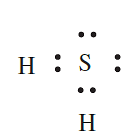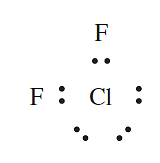
The octet rule
 المؤلف:
CATHERINE E. HOUSECROFT AND ALAN G. SHARPE
المؤلف:
CATHERINE E. HOUSECROFT AND ALAN G. SHARPE
 المصدر:
INORGANIC CHEMISTRY
المصدر:
INORGANIC CHEMISTRY
 الجزء والصفحة:
p36
الجزء والصفحة:
p36
 30-5-2016
30-5-2016
 1746
1746
The octet rule
The ground state electronic configurations in Table 1.3 map out a pattern illustrating that filled quantum levels provide ‘building blocks’ within the electronic configurations of theheavier elements. Worked example 1.6 emphasized that each noble gas is characterized by having a filled quantum level; with the exception of He, this configuration is of the form ns2 np6. In the early development of bonding models, the octet rule was commonly cited as a means of rationalizing the formation of a particular compound (or ion) which involved an s- or p-block element.
However, the concept of the octet rule is rather limited since it is, strictly, only valid for n = 2. Further, many molecules, especially neutral compounds of boron, simply do not contain enough valence electrons for each atom to be associated with eight electrons. Ions (e.g. Mg+2 and O-2) often exist only in environments in which electrostatic interaction energies compensate for the energies needed to form the ions from atoms.
An atom obeys the octet rule when it gains, loses or shares electrons to give an outer shell containing eight electrons with the configuration ns2 np6.
We have already noted the exception of He, but for n ≥ 3, there is the possibility of apparently expanding the octet . Although the octet rule is still useful at an elementary level, we must bear in mind that it is restricted to a relatively small number of elements.
Worked example: The octet rule and the apparent expansion of the octet
In which of the following covalent compounds is the central atom obeying the octet rule: (a) CH4; (b) H2S; (c) ClF3?
- CH4: A C atom has four valence electrons and forms four covalent bonds by sharing electrons with four Hatoms to give an octet. This can be represented by the Lewis structure:

(b) H2S: An S atom has six valence electrons and forms two covalent bonds by sharing electrons with two H atoms to give an octet. The appropriate Lewis structure which shows that S obeys the octet rule in H2S is:


(c) ClF3: A Cl atom has seven valence electrons and should form only one single covalent bond to obtain an octet (e.g. as in Cl2). In ClF3, the octet appears to be expanded:


 الاكثر قراءة في نظريات التآصر الكيميائي
الاكثر قراءة في نظريات التآصر الكيميائي
 اخر الاخبار
اخر الاخبار
اخبار العتبة العباسية المقدسة


